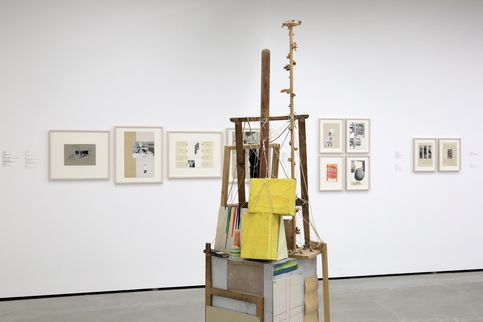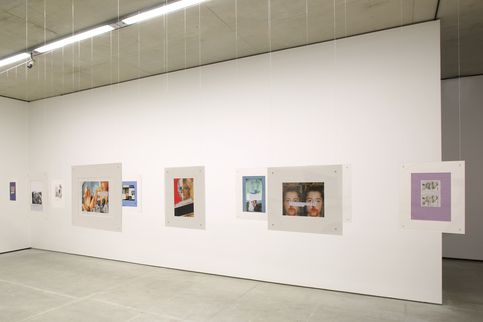Poetics of Change
Works from the collections
Curators: Sabine Breitwieser, Director, Museum der Moderne Salzburg; Antonia Lotz, Curator, Generali Foundation Collection; Christina Penetsdorfer, Assistant Curator, Museum der Moderne Salzburg
Venue: Museum der Moderne Salzburg, Mönchsberg
With “Poetics of Change”, the Museum der Moderne Salzburg presented a new thematically focused exhibition of art from its collections, featuring more than sixty works.
The new collection presentation pointed up the poetic aspects of conceptual art, which critics even today often unfairly describe as lacking aesthetic or pictorial qualities. The selected works showed artists responding to transformative processes that tie in with changes in the environments of our daily lives, shifts affecting their own identities, and innovations in art history, as well as proposals for change with a view to an alternative future.
The show compiled art that brings the structural transformations brought on by war or the privatization of public spaces into focus; see Dan Graham and Robin Hurst’s Private ‘Public’ Space: The Corporate Atrium Garden (1987), which highlights developments that were transforming New York City in the late 1980s. Revolutionary change could also be brought on by transgressions such as Günter Brus’s provocative Viennese Walk, for which promenaded as a “living picture” on July 5, 1965—the action ended with his being arrested. Other aspects the works on display reflected on the changes and reforms inspired by the critical scrutiny of gender roles, mass media, the monotony of work, and the subjectivity of language. This examination of the possibilities and repercussions of change corresponded with prevailing artistic strategies and techniques such as the principle of action/reaction, collage and assemblage, as well as more idiosyncratic forms like the ones developed by Oswald Oberhuber, who had made perpetual transformation the cornerstone of his art.
The selection of works from the collections was complemented by Hans Haacke’s World Poll, which premiered at the 2015 Venice Biennale. Using tablets installed in the gallery, visitors could take part in the survey, which Haacke had adapted to the specific situation in Salzburg, and access the continually updated results. The work let the viewer experience how direct involvement and technological process can facilitate change: as early as 1969, the artist used questionnaires and ballots to bring the workings of political systems to light. The critical potential of this instrument was evident in his Visitors’ Profile, Directions 3: Eight Artists, Milwaukee Art Center, June 19 through August 8 (1971), a work in the Generali Foundation Collection, which also was on view in the exhibition.
Artists: Fareed Armaly, Azra Aksamija, Robert Barry, Gottfried Bechtold / Heinz Schmidt, Günter Brus, VALIE EXPORT / Peter Weibel, Isa Genzken, Dan Graham / Robin Hurst, Nilbar Güreş, Hans Haacke, Hans Hollein, Richard Kriesche, Elke Krystufek, Friedl Kubelka, Markus Lüpertz, Ree Morton, Oswald Oberhuber, Ewa Partum, Arnulf Rainer, Gerhard Rühm, Curt Stenvert, Josef Strau, Franz West, Heimo Zobernig


